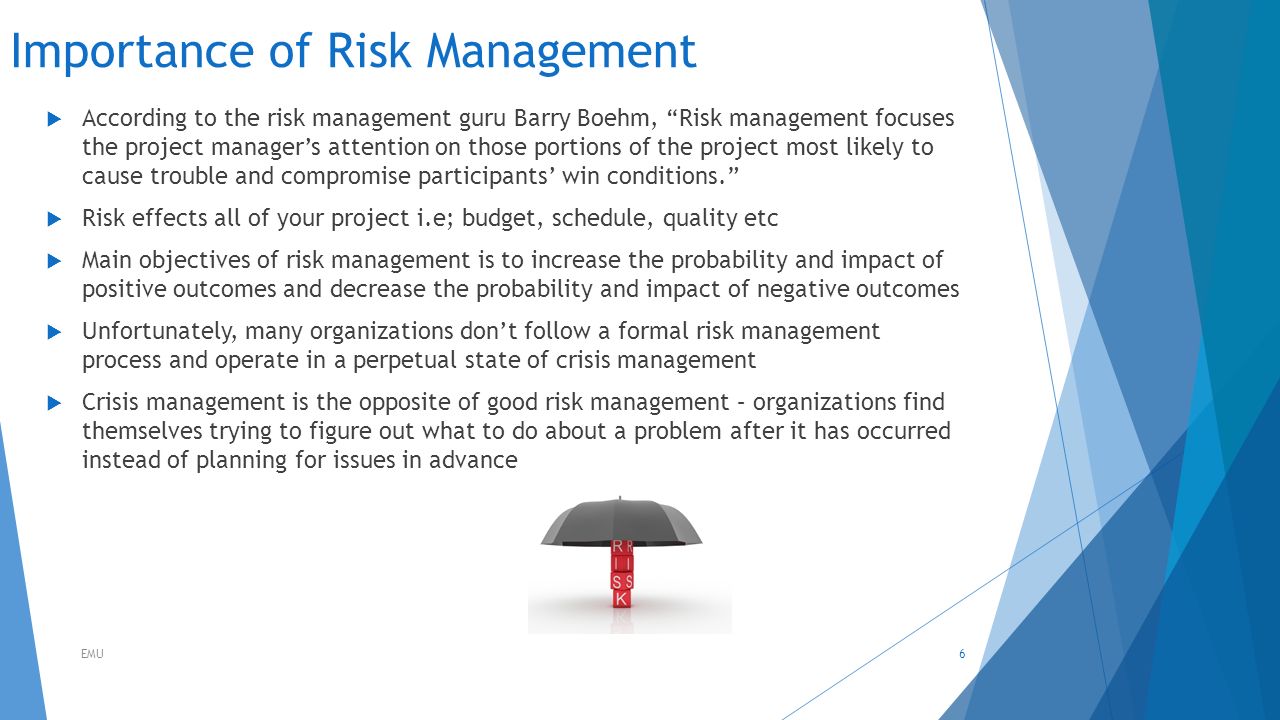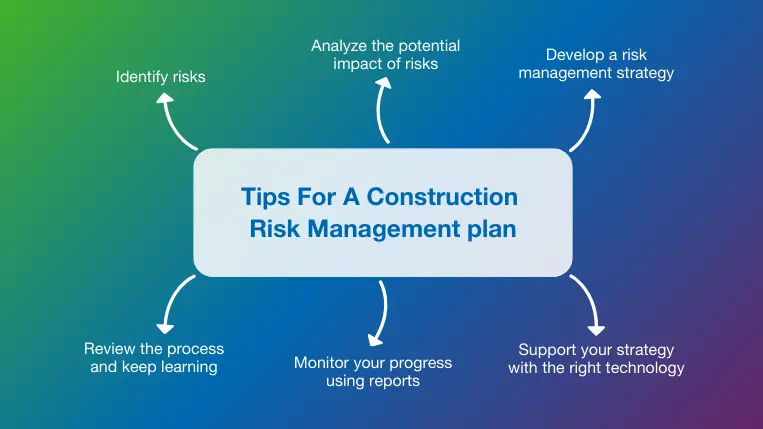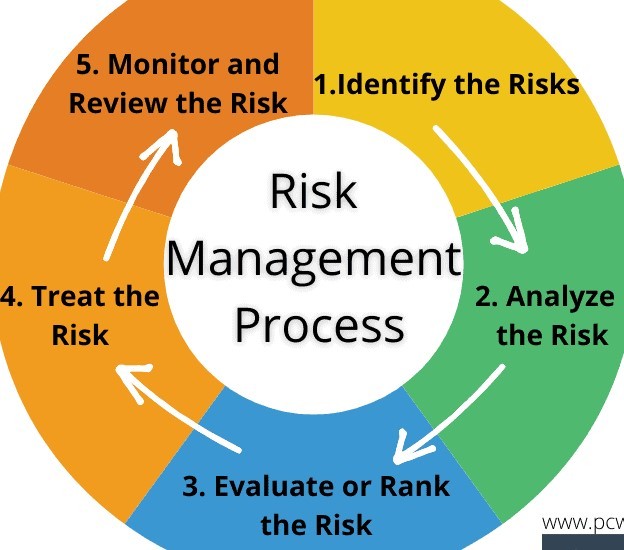Addressing the Unseen Risks: The Importance of Risk Management in Technology
Addressing the Unseen Risks: The Importance of Risk Management in Technology
Blog Article
Checking out the Relevance of Risk Management for Effective Decision-Making Strategies
In the intricate world of company, Risk Management becomes a crucial consider the decision-making procedure. The ability to recognize possible threats and opportunities, and strategize as necessary, can spell the difference between success and failing. With tools such as SWOT and PESTEL, companies are equipped to make enlightened selections, cultivating durability and versatility in an ever-changing atmosphere. Wondering how this functions? Allow's unpack the characteristics better.
Understanding the Idea of Risk Management
Risk Management, an essential part in decision-making, is typically misunderstood or oversimplified. Usually, it refers to the identification, analysis, and prioritization of dangers to decrease, monitor, and regulate the chance or influence of unfavorable occasions. It's not just concerning avoiding unfavorable results, yet also concerning recognizing possible opportunities. Risk Management entails regimented and organized methods, utilizing information and insightful evaluations. It calls for an extensive understanding of the company's context, objectives, and the prospective dangers that can combat them. From financial uncertainties, lawful obligations, calculated Management mistakes, to crashes and all-natural disasters, it deals with different threats. Notably, efficient Risk Management is not stagnant; it's a constant, progressive procedure that advances with changing scenarios.
The Function of Risk Management in Decision-Making Processes
In the world of strategic preparation and service procedures, Risk Management plays an indispensable function in decision-making processes. Risk Management therefore ends up being an important tool in decision-making, assisting leaders to make enlightened selections based on a detailed understanding of the threats entailed. Risk Management offers as an essential component in the decision-making processes of any type of company.

How Risk Management Enhances Strategic Preparation
In the context of tactical planning, Risk Management plays a critical role. Starting with the recognition of potential risks, it additionally expands to the implementation of Risk reduction procedures. The function of Risk Management is vibrant yet not static, as it requires consistent surveillance and adjusting of techniques.
Determining Potential Dangers

Applying Risk Reduction
Having developed the significance of recognizing prospective dangers, the following action is to explore Risk mitigation. This process includes creating and implementing approaches to manage recognized risks successfully. It is an essential element of critical planning as it improves decision-making by reducing possible unfavorable end results. Risk reduction techniques can range from Risk avoidance, Risk transfer, to run the risk of reduction. Each method needs to be tailored to the specific Risk, considering its potential impact and the company's Risk tolerance. Reliable Risk reduction requires a deep understanding of the Risk landscape and the prospective effect of each Risk. This understanding allows companies to prioritize threats and allot sources effectively, guaranteeing that one of the most considerable dangers are resolved first.
Tracking and Adjusting Approaches
Though Risk reduction is a critical action in calculated preparation, constant tracking and modification of these techniques is equally crucial. This recurring process allows companies to determine brand-new risks and reassess existing ones, guaranteeing the carried out approaches continue to be effective in the ever-changing organization atmosphere. It additionally supplies a possibility to assess the success of the Risk Management procedures, permitting changes to be made where essential, additional enhancing critical planning. Effective surveillance and change need making use of analytics and essential efficiency indications (KPIs) to gauge performance. These tools offer important data-driven insights that can notify strategic decision-making. As a result, monitoring and readjusting Risk Management methods is an important component for improving a company's resilience and tactical preparation.
Instance Studies: Effective Risk Management and Decision-Making
On the planet of service and financing, successful Risk Management and decision-making frequently offer as the pillars of flourishing enterprises. One such entity is a multinational oil firm that mitigated financial loss by hedging versus fluctuating oil costs. In have a peek at this website one more instance, a tech startup grew by identifying and approving risky, high-reward techniques in a volatile market. An international bank, confronted with regulative uncertainties, successfully navigated the scenario through proactive Risk analysis and dynamic decision-making. These cases highlight the worth of astute Risk Management in decision-making procedures. It is not the lack of Risk, but the Management of it, that typically distinguishes effective companies from unsuccessful ones. These situations highlight the critical function of Risk Management in calculated decision-making. importance of risk management.
Devices and Techniques for Reliable Risk Management
Navigating the complex puzzle of Risk Management requires the right collection of devices and techniques. These devices, such as Risk registers and warmth maps, aid in determining and evaluating prospective dangers. Techniques include both measurable approaches, like sensitivity evaluation, and qualitative approaches, such as SWOT evaluation. These assistance in browse around this web-site prioritizing dangers based on their potential impact and possibility. Risk feedback strategies, a crucial component of Risk Management, include accepting, staying clear of, moving, or mitigating risks. Monitoring and controlling threats, via normal audits and testimonials, ensure that the methods continue to be efficient. With these techniques and tools, decision-makers can browse the complicated landscape of Risk Management, consequently promoting educated and effective decision-making.
Future Patterns in Risk Management and Decision-Making Methods
As we explore the vast landscape of Risk Management, it becomes evident that the techniques and tools made use of today will certainly continue to develop. The principle of Risk society, where every member of an organization click is mindful and involved in Risk Management, will get a lot more prestige. These fads herald an even more comprehensive and aggressive approach in the direction of Risk Management and decision-making.
Conclusion

Risk Management therefore ends up being an important tool in decision-making, aiding leaders to make enlightened selections based on an extensive understanding of the risks involved. Risk reduction strategies can vary from Risk evasion, Risk transfer, to run the risk of reduction (importance of risk management). Effective Risk reduction calls for a deep understanding of the Risk landscape and the potential effect of each Risk. Risk reaction approaches, a crucial component of Risk Management, entail accepting, preventing, moving, or mitigating threats. The principle of Risk culture, where every participant of a company is conscious and entailed in Risk Management, will gain extra prominence
Report this page